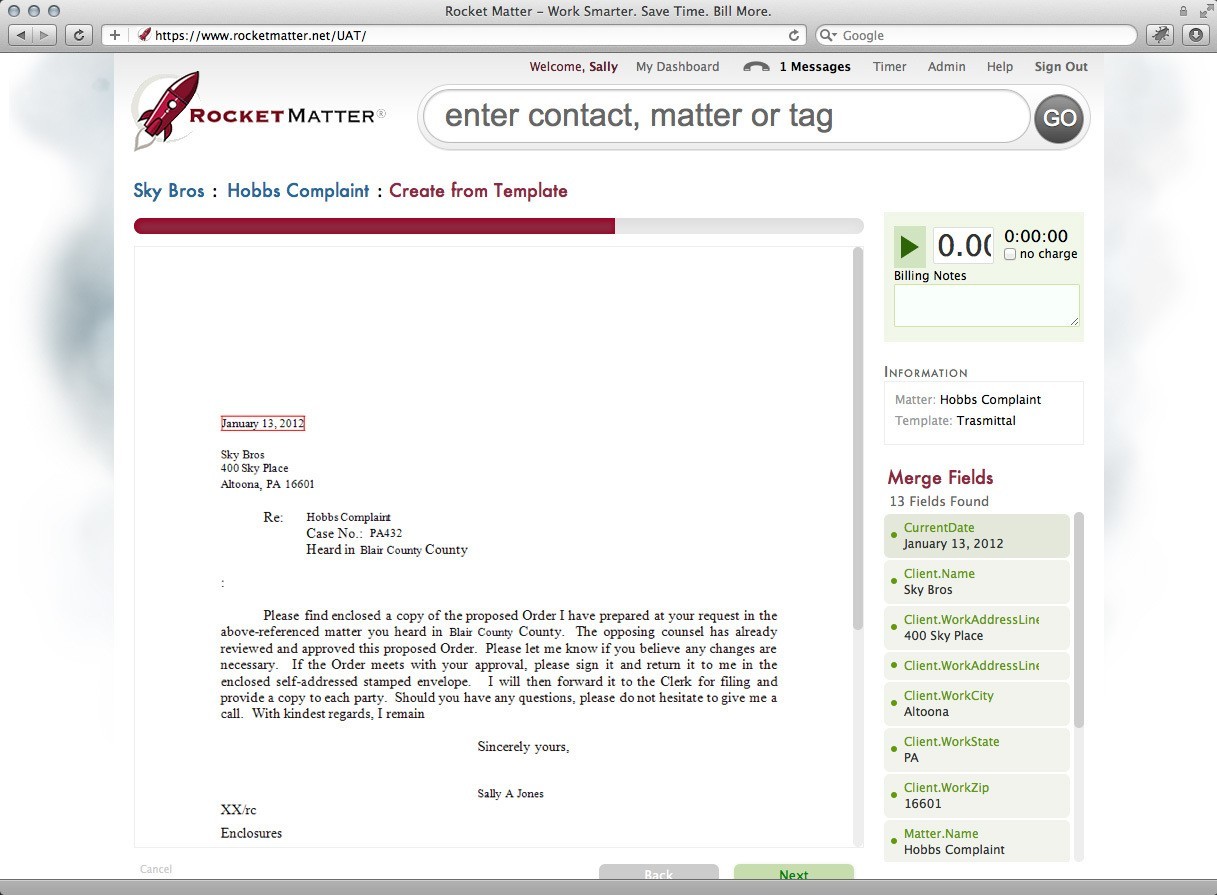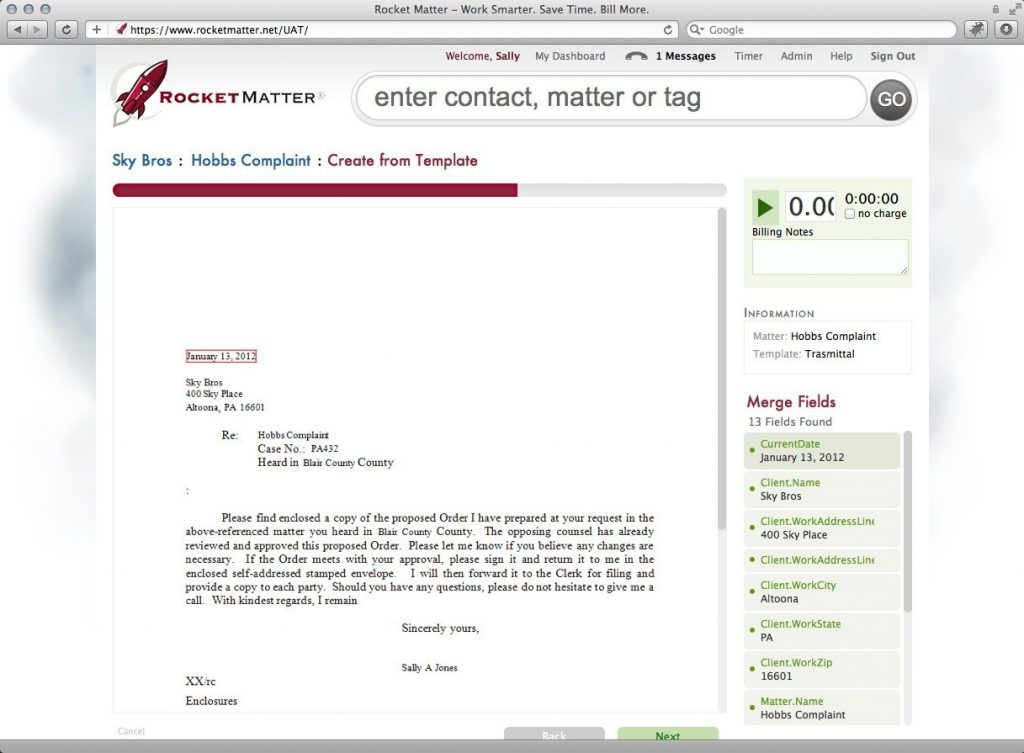The Web-based practice management application Rocket Matter today released version 2.0 of its platform. The new version adds two notable features: document assembly and custom fields.
With this release, Rocket Matter becomes the only cloud-based practice management platform to integrate document assembly, according to Larry Port, the company’s co-founder and chief software architect.
The document assembly feature allows users to create templates for legal forms or other documents and then automatically merge client and matter data into a template to create a final document. As the user creates a document, Rocket Matter can also automatically create a billing entry.
The user creates the templates on his or her desktop, using Microsoft Word’s ability to create “merge fields.” Rocket Matter provides a guide for formatting these merge fields to work with its application. For those unfamiliar with using merge fields, Rocket Matter also provides links to guides that explain how to create and use them. As an example, to insert a client name in template, you’d use the fields: “«Client.Name»«Client.LastName»”.
Once you’ve created a template on your desktop, you upload it to Rocket Matter. As you upload it, the application checks it to ensure that you’ve properly formatted the merge fields. If there is an error, the application shows you which field contains the error. If you’ve set up all the fields properly, then the document is added to your template library, available to use for any client or matter.
Then, when you go to the dashboard for a matter within Rocket Matter, you see a new link, “Create from Template.” Click that to see a list of your available templates. Select a template and Rocket Matter automatically populates its fields with information such as party names, docket numbers, opposing counsel and the like. As it displays the final document, it shows the fields in a panel to the right. Click on any field in the panel to jump to that field in the document.
Custom Fields
With the addition of custom fields, Rocket Matter enables the user to customize these templates beyond the standard fields it already provides. Users can create an unlimited number of custom fields, both for matters and for contacts. And any custom field you create can become a merge field in a document template.
To create a custom field for a matter or contact, simply open the item. A portion of the screen is labeled “Data.” For a matter, this Data section includes the case number and county. For a contact, it includes date of birth, gender and Social Security number. Just below those data items are new horizontal columns with two headings, “Labels” and “Values.” Here is where you create a custom field. Click “add another” and simply fill in the label and value. For label, you might put “Secretary” and for value “John Jones.” You can also add custom fields when you create a new contact or matter.
As I’ve previously noted here, Rocket Matter is integrated with Dropbox, allowing you to automatically synchronize documents among Rocket Matter, your desktop and your mobile devices. More recently, the company announced its integration with Evernote. These integrations make the document assembly feature even more practical to use.
 Robert Ambrogi Blog
Robert Ambrogi Blog
